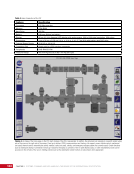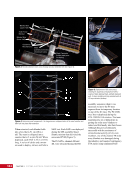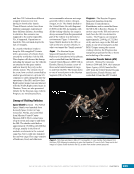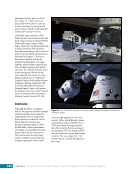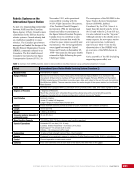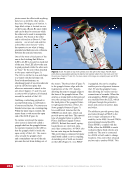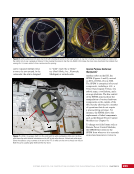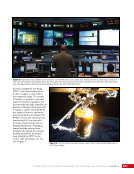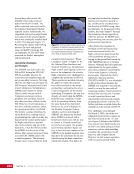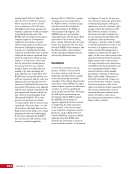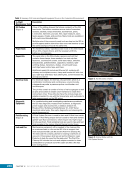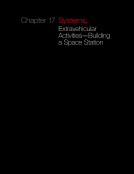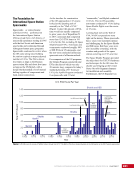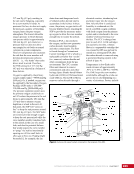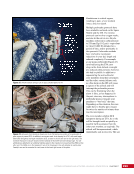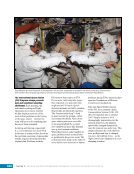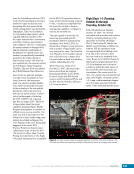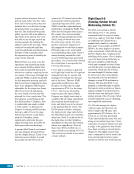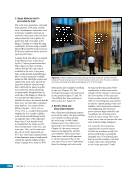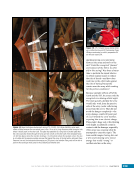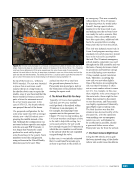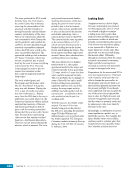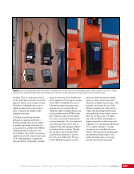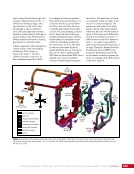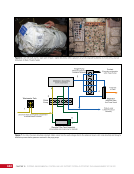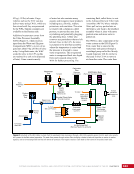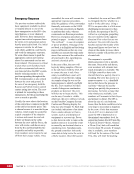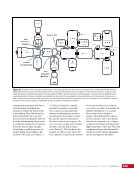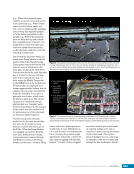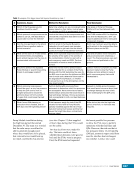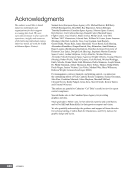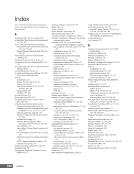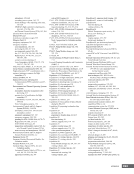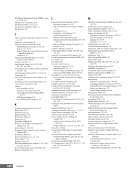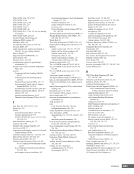151 DAY IN THE LIFE: DEBRIS AVOIDANCE—NAVIGATING THE OCCASIONALLY UNFRIENDLY SKIES OF LOW-EARTH ORBIT CHAPTER 8 The following timeline is based on the time of ignition (TIG)—the time at which the PDAM burn would execute. Throughout the PDAM planning and execution process, TOPO continues to refine the Pc calculation as data from JSpOC become available. If an object manages to go green very late, the burn can be cancelled. Typically, this occurs before the final attitude control handover to avoid thruster firings, which may perturb the orbit (and potentially increase the probability of collision). Safe Haven If MCC-H is notified of a conjunction very late, there may not be enough time to execute a burn. As mentioned previously, MCC-H and MCC-M must be notified no later than 5.5 hours before the TCA to configure the systems (primarily solar arrays), start the burn sequence on board the Russian Segment, and actually perform the burn. If insufficient time is available, “safe haven” procedures allow the ISS crew members to close hatches in the USOS, enter their respective Soyuz vehicles (which are used to transport crews to and from the ISS), and close the hatches in the Soyuz to be best set up for withstanding an impact and performing an emergency departure and deorbit, if required. Keeping hatches closed ensures that if a module is penetrated by an impact event, the loss of air is limited to that module and not the entire ISS volume. Keeping the crew members inside the Soyuz minimizes their exposure to an ISS depressurization that results from impact and has them pre- positioned in the vehicle that can return them home if the ISS is significantly damaged. Safe haven was executed on several occasions earlier in the life of the ISS before the advent of PDAM, when only the nominal DAM was available and required a 24-hour notice. PDAM was developed specifically to avoid the safe haven scenario and has been largely successful, since notification of a conjunction by JSpOC with less than 6 hours remaining is extremely unusual. Frequency of the International Space Station Debris Avoidance Maneuvers As of mid-2016, DAMs have been attempted 21 times (the first one in 1999 was unsuccessful and did not burn). Further safe haven events (in 2009, 2011, 2012, and 2015) have taken place, three of which occurred prior to the creation of the PDAM in 2012, which made them less likely. For comparison’s sake, in 2015, 116 conjunctions fell within the pizza box. MCC-H actively worked these conjunctions, 111 of which eventually went green and did not require a DAM or PDAM. An actual impact with a tracked object, which would result in (at a minimum) significant damage to the ISS, has never occurred. Figure 9 shows the number of DAMs. Year # DAM 2017 0 2016 0 2015 4 2014 5 2013 0 2012 3 2011 2 2010 1 2009 2 2008 1 2004-2007 0 2003 1 2002 1 2001 2 2000 1 1999 2 1998 0 Figure 9. DAMs by year through mid-2017. The Orbital Debris Environment— A Growing Problem The debris environment in the vicinity of the ISS has gotten worse over the past 15 years. According to the NASA Orbital Debris Office, more than one-third of the debris currently in orbit came from two events: the hypervelocity collision between the operational Iridium 33 satellite and the abandoned Kosmos 2251 satellite in 2009, recounted above and, the intentional destruction of the Fengyun-1C weather satellite by China in 2007 with a missile during a defense test. The collision between Kosmos and Iridium alone produced more than 2000 pieces of trackable debris.
Purchased by unknown, nofirst nolast From: Scampersandbox (scampersandbox.tizrapublisher.com)








































































































































